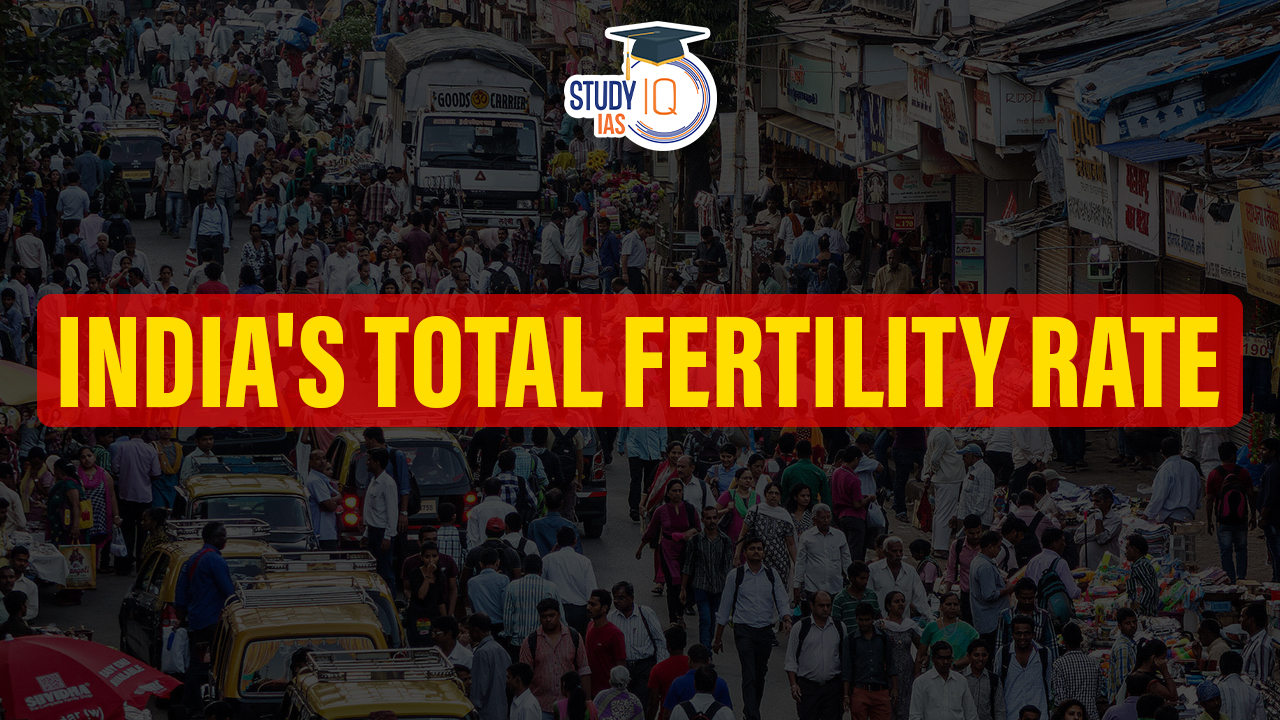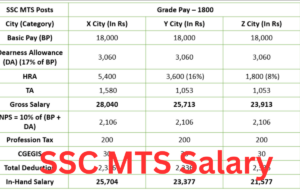Table of Contents
Context: The Total Fertility Rate (TFR) of India has remained at 2.0 in 2021 (same as in 2020) shown in the Sample Registration System (SRS) report for 2021 released by the Registrar-General of India (RGI).
What is Total Fertility Rate (TFR)?
- The Total Fertility Rate (TFR) estimates the average number of children a woman would have in her lifetime.
- It’s calculated based on the assumption that a woman experiences the current age-specific fertility rates (the rate of births at each age group) throughout her entire reproductive lifespan (typically considered ages 15 to 49) and survives through those years.
Total Fertility Rate in India
- TFR Evolution: India’s TFR has sharply fallen from 6.18 in 1950 to 4.60 in 1980, and further to 91 in 2021.
- Future Projection: By 2050, one in five Indians will be a senior citizen, indicating a shift towards an ageing population similar to China’s current demographic challenges.
Key Highlights of the SRS 2021 Report: Total Fertility Rate (TFR)
- National Average: 2.0, same as 2020
- Highest TFR: Bihar (3.0)
- Lowest (1.4): Delhi, West Bengal
Demographic Age Composition (1971–2021)
- 0–14 years: Declined from 41.2% (1971) to 24.8% (2021)
- 15–59 years (working-age group): Increased from 53.4% to 66.2%
- 60+ years: Increased from 6% to 9%
- 65+ years: Increased from 5.3% to 5.9%

| Related Term |
| TFR of about 2.1 children per woman is called Replacement-level fertility. |
TFR Below Replacement Level (2.1) in Many Indian States
- Tamil Nadu,
- Kerala,
- Maharashtra,
- Andhra Pradesh,
- Telangana,
- Karnataka, etc.
TFR at or above Replacement Level
- Assam (2.1),
- Gujarat (2.0),
- Haryana (2.0)
Elderly Population by State
| Highest | Lowest | Marriage Trends |
|
|
|
About SRS Survey
Sample Registration System (SRS) is a sample survey conducted by the Office of the Registrar General of India (RGI) under the Ministry of Home Affairs. It is India’s largest source of continuous and reliable data pertaining to vital statistics such as birth rates, death rates, infant mortality rate, and fertility indicators at both national and sub-national levels. It publishes periodic reports including:
- Crude Birth and Death Rates
- Infant Mortality Rate (IMR)
- Total Fertility Rate (TFR)
- Life Expectancy
Reasons for Declining Fertility in India
- Family Welfare Programme: Post-independence efforts to control population growth through health and welfare programs encouraged families to have no more than two children.
- Economic Shifts: The reversal of intergenerational wealth flow, where parents see reduced benefits from offspring, influencing decisions against having additional children.
- Female Literacy and Workforce Participation: Increased education and career opportunities for women have led to a preference for smaller families or decisions against having children.
Long-term Consequences
- Increase in Elderly Population: The proportion of senior citizens in India is expected to exceed 20% by 2050, stressing the need for adequate senior care and support systems.
- Labour Shortages: Anticipated reductions in the working-age population may lead to labour force challenges.
- Gender Imbalance: Persisting gender preferences could further exacerbate social imbalances.
Mitigation and Future Strategies
- Scandinavian Model: Emphasis on supporting families through affordable childcare, healthcare investments, and initiatives for gender equity.
- Economic and Social Policies: The importance of policies that stimulate economic growth, job creation, social security, and pension reforms to adapt to demographic shifts.
Global Implications
- Population Management: The decline in fertility rates suggests that countries may need to consider ethical and effective immigration policies to maintain population levels.
We’re now on WhatsApp. Click to Join
|
Replacement Level |
|


 SSC MTS Salary 2025, Check Highest Salar...
SSC MTS Salary 2025, Check Highest Salar...
 F-35 Fighter Jet Stranded in Kerala: Dis...
F-35 Fighter Jet Stranded in Kerala: Dis...
 Quad Summit 2025: Key Announcements, Str...
Quad Summit 2025: Key Announcements, Str...





















